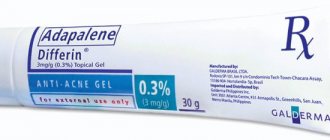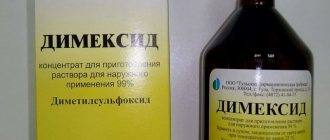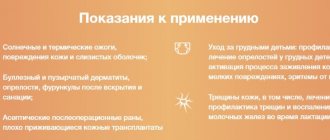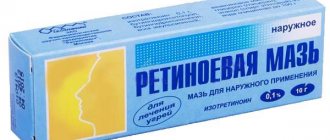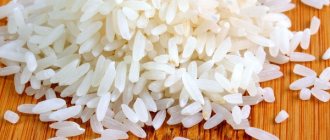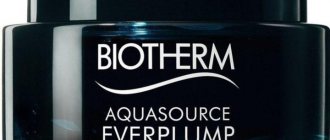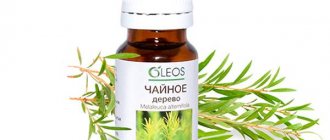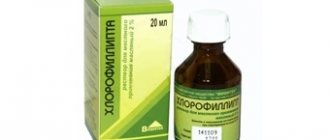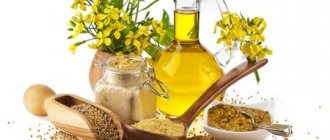What are retinoids?
Retinoids can be classified as a subtype of vitamin A. These are substances of natural or synthetic origin that have antioxidant and natural vitamin properties.
Scientists started talking about the beneficial properties of retinoids in the 60s of the last century. The study proved that one of the factors causing acne, acne, and early skin aging on the face is a lack of vitamin A and its derivatives. Since that time, cosmetology has been developing preparations and products for the skin with retinoids.
Classification
There are three generations of retinoids that are used to combat skin rashes, acne, wrinkles, and pigmentation. The features of these groups will be discussed below.
First generation
This group includes the most effective anti-acne drugs: Retinol, as well as Tretinoin (vitamin A in the form of carboxylic acid), Isotretinoin (Roaccutane, Acnecutane) . Tretinoin was the first topical retinoid to be used against acne, but the substance breaks down very quickly when exposed to sunlight. You can find acne cream here. Also, in some cases, it can cause skin irritation. Usually used in local therapy in the form of ointments or gel.
Second generation
The second generation is represented by Etretinate and its derivative Acitretin . These are synthetic derivatives of Retinoic acid. The drugs are close to Retinol, but they are not included in ointments or gels. They are taken orally in the form of tablets and capsules. Effective for psoriasis, lupus erythematosus, ichthyosis.
Third generation
After further structural changes in first-generation drugs, chemists obtained carotenoids (Tazarotene, Bexarotene) . They do not contain retinoic acid, but retain the activity of retinoids. They are more often used to treat cancer, such as cutaneous lymphoma.
The importance of vitamin A for the body
Vitamin A is an essential substance for the healthy functioning of the body. Its deficiency leads to serious pathologies and the risk of death.
The effect of vitamin A on individual body systems:
- Leather. The substance protects, rejuvenates and stimulates the functioning of epidermal cells.
- Immunity. Retinol is the strongest antioxidant. It quickly binds free radicals and protects the body. Vitamin A stimulates white blood cells to absorb and destroy microbes as well as dead cells. The substance is involved in organizing the protective function of mucous membranes.
- Vision. Vitamin A is used to treat night blindness. This is what people call the lack of ability to see objects in poor lighting. If there is a lack of retinol in the eyeballs, the synthesis of the light-sensitive substance stops. In old age, the vitamin helps prevent blindness and cataracts.
Retinoids: reviews
Retinoids: reviews
Every girl wants to have beautiful skin, because an attractive appearance indicates good health. With clean skin, a woman feels confident in any situation. To help their patients get rid of acne quickly and effectively, doctors prescribe retinoids. Reviews from different people who have recovered from skin diseases:
Ekaterina, 26 years old
I had a mild form of acne. As the doctor said at the beginning of treatment, my mixed form of acne is comedonal papulopustular, and can be treated well with retinoids. The doctor prescribed me a drug for internal use. Liver parameters were also monitored. The treatment lasted 3 months. Now my facial skin is clean and beautiful.
Valery. 23 years old
Skin problems started at age 15. First acne appeared on the forehead, then on the cheeks. I contacted a dermatovenerologist. The doctor prescribed treatment with retinoids. I took 70 mg per day for a long time. Then the dose was reduced. The drug was well tolerated and was tested regularly. A year has already passed since the treatment and my skin is clear.
Yulia, 18 years old
I have problem skin. I realized this at the age of 15, when acne began to appear one after another. I tried all the advice from my friends, applied all sorts of creams and lotions - nothing helped. Then my mother took me to a cosmetology clinic to see a dermatologist. The treatment lasted 3 months. I liked how the appearance of my skin and face in general changed. Now the skin is beautiful and clean. To prevent acne from appearing again, the doctor prescribed a special cream.
The effect of retinol on the skin
Retinol differs from natural vitamin A in its structure, but their effects on the skin are similar:
- Slowing down the proliferation of epithelial cells in the sebaceous glands. Stimulating normal secretion outflow.
- Prevention of photoaging.
Retinoids are a number of effective agents that have a beneficial effect on the condition of the skin.
- Strengthening the cell matrix. This can be achieved by stimulating new collagen compounds and inhibiting the destruction of old ones.
- Peeling effect. Retinoids stimulate the renewal of skin cellular composition. Cells grow and develop faster, but age and break down more slowly. Vitamin analogues penetrate the cell and participate in the biological synthesis of DNA and RNA.
- Antioxidant effect. This effect can be achieved by strengthening the cell walls.
Operating principle
Retinoids for the treatment of acne act on the skin in several stages:
Side effects of topical retinoids: dry skin, irritation of mucous membranes upon contact with the drug
- The first few days of using the product may cause concern due to symptoms such as flaking of the skin, redness or signs of irritation. Such symptoms are accompanied by an acceleration of the process of death of keratinized cells. As a result, the skin looks healthier and younger. Pores are cleansed by breaking down fatty plugs and removing impurities. After a month, acne treatment will give the first visible results. The pronounced effect will be noticeable after 8–10 weeks.
- Collagen production is stimulated. Retinoids penetrate deeply into the dermis, stimulating collagen production. The skin becomes elastic, the severity of wrinkles decreases. Closer to 40 years, collagen content decreases by half. This is clearly visible in the condition of the skin. It becomes less elastic and thickens. The first results after the procedure will be noticeable after 2–3 months, and pronounced results will be visible after 9 months.
- The skin is moisturized. The humidification process occurs for two reasons. The first is to stimulate the secretion of non-sulfonated glycosaminoglycan. It is this that moisturizes the dermis and maintains the necessary level of hydration of collagen fibers with water. This is especially important for the elasticity of the epidermis. The second reason is the ability of most retinoids to speed up the process of stem cell division. The deep layers of the epidermis thicken. Moisture evaporates less from the surface of the skin. And a thoroughly moisturized dermis looks young.
For acne, various preparations based on Vitamin A are used.
Antibacterial drugs can be used as part of official pharmacological agents for external use
Types of retinoids
There are several types of vitamin A analogues:
- First generation. The substances are used in medicines and skin care cosmetics. The line is represented by various retinol esters (tretinoin, alitretinoin). Used to treat acne and against signs of skin aging.
- Second generation. These include etretinate and acitretin. The compounds are used as active ingredients in drugs for the treatment of psoriasis, atopic and contact dermatitis.
- Third generation. The substances are classified as arotenoids. They do not have the same origin and structure as the natural vitamin. They are obtained from naphthoic or other types of acids. They have the properties of natural retinoids. Used in medicines intended to combat benign tumors and cancer.
- Fourth generation. The "youngest" substances. They are of artificial origin.
Features of the use of retinoids
Retinoids are used in combination with antibiotics for moderate acne. You can learn more about how acne is treated in teenagers here. That is, if several pimples appear on your face, you should not resort to medicinal products of this group, especially tablets and capsules. They have many side effects, including severe damage to the liver.
Ointments and gels dry out the skin and it begins to peel. Therefore, people with dry skin are contraindicated to use external products.
According to the method of application, retinoids are divided into systemic (tablets, capsules) and topical, that is, local. This group includes creams and gels.
Indications for use
Vitamin A and its retinoid analogues are used to treat and improve skin conditions in the following cases:
- any types of acne;
- fistulas of the fatty ducts of the sebaceous glands;
- age-related skin changes;
- acne vulgaris;
- pink pimples;
- burns and pigmentation caused by excessive exposure to the open sun;
- violation of keratization;
- psoriasis;
- the appearance of various warts, etc.
Retinoids affect the skin in the same way as hormonal agents. But, unlike the latter, they do not cause addiction and dangerous side effects.
First generation drugs
Retinol and tretinoin belong to the first generation of retinoids because they are structurally closest to vitamin A.
Retinol
Acne retinol is available as a stand-alone product in tablets, oil capsules, dragees, and injections and is the true form of vitamin A. Retinol is well absorbed, but if you apply it to the skin, only about 10% will be converted into tretinoin.
This means that a product containing retinol, as manufacturers claim, does not have the same properties as tretinoin, that is, fight acne. Retinol is an over-the-counter cosmetic option and is found in skin care products.
The advantage of retinol is that it has no list of side effects and is easily tolerated by all skin types. Cosmetics with vitamin A are a good start for using retinoids.
Contraindications
There are strict contraindications to the use of retinoids in the form of vitamins or superficially:
- Pregnancy. Taking retinoids should be stopped one month before you plan to conceive.
- Allergy to vitamin A, red vegetables and fruits.
- Breastfeeding (natural and synthesized analogues of vitamin A enter the child’s body through milk and can cause hypervitaminosis).
- Hypervitaminosis.
- Age under 12 years.
You can use retinoids only after consulting a doctor:
- with high triglyceride levels;
- for chronic alcoholism;
- for chronic kidney and liver diseases;
- with high blood sugar levels;
- with pancreatitis.
Contraindications to the use of retinoids (use during pregnancy)
It seems that drugs with the properties of vitamin A do not cause any harm to the body. But they have a number of serious contraindications:
- Kidney and liver diseases;
- Skin sensitivity;
- Pregnancy and lactation. The use of retinols during this period is strictly unacceptable, as they will not only cause various fetal defects, but also negatively affect the growth and development of an already born baby.
You cannot self-prescribe drugs from this group, both locally and systemically. You should definitely consult a dermatologist for advice.
How to use retinoid-based medications for acne?
Retinoids for acne can be used as a primary or additional treatment. Used externally and for internal therapy.
The effects that can be achieved when using retinoids against acne:
- tissue healing is stimulated at the cellular level; scars and keratinized tissue do not appear at the site of acne, even large ones;
- wounds and foci of inflammation heal much faster, this allows the rash to spread to healthy areas;
- the amount of sebum and sebaceous gland secretion decreases;
- the ducts of the sebaceous glands expand, the viscosity of the secretion decreases;
- the stratum corneum peels off.
For mild to moderate acne, it is enough to use retinoids externally, in the form of lotions, ointments, gels or vitamin creams. In case of severe skin lesions, the appearance of deep pimples, fistulas, acne vulgaris, it is necessary to use dosage forms of retinoids - tablets and capsules.
Side effect
Retinoic acid syndrome: includes shortness of breath, fever, acute respiratory distress syndrome, pulmonary infiltration, leukocytosis, drop in blood pressure, pleural effusion, kidney and liver failure may develop.
Dermatological manifestations: possible xeroderma, rash, cheilitis, less often - erythema, itching, increased sweating, cellulite, pathological alopecia, exfoliative dermatitis, dry cornea and conjunctiva.
From the side:
- digestive system: dyspeptic symptoms - nausea, vomiting, diarrhea.
- Central nervous system: rarely - dizziness, headaches, changes in consciousness, impaired intracranial pressure, anxiety, changes in vision and hearing.
- metabolism: possible increase in the concentration of triglycerides in plasma, cholesterol, and impaired body weight.
- respiratory system: rarely - cough, effusion into the pleural cavity, swelling of the nasal mucosa, shortness of breath, inflammation of the pharynx, wheezing in the bronchi, stridor.
- cardiovascular system: rhythm disturbance.
- musculoskeletal system: rarely - myalgia.
Other: swelling, rarely - fever, chills, infections, general weakness and drowsiness, malaise, chest and back pain.
For external use: rare occurrence of redness, burning and peeling of the skin at the sites of application; in isolated cases, swelling, blistering, and increased skin reactivity to light are possible.
Retinoids for wrinkles
Retinoids for wrinkles are used externally only. A natural form of retinol as part of a vitamin complex can be a supplement.
Cosmetologists recommend using creams and masks with retinoids even before the appearance of large age-related wrinkles.
Regular intake of the substance into the epidermis promotes the appearance of healthier, larger cells that are less susceptible to destruction. Antioxidant properties protect aging skin, which is more susceptible to the negative effects of the external environment, especially in urban air conditions.
Anti-wrinkle retinoids affect the skin in the following ways:
- stimulate the division of stronger cells;
- improve their “communication” with each other;
- the level of the stratum corneum of the skin decreases;
- the structure of the deep layers of the skin is strengthened (this helps to avoid deep wrinkles and changes in the shape of the face);
- the cellular composition of the skin is renewed more often.
After therapy, the skin looks healthier, denser and smoother. Any damage, including sunburn, is restored faster, without scars and pigmentation.
Antibiotics in the treatment of acne: how to make the right choice
Acne, which is popularly called acne or pimples, is a disease more typical of adolescence. In people over 20 years of age, it is relatively rare. The main reason is the active development of a microbe in the sebaceous gland and its ducts, which is called Propionibacterium acnes. And often, dermatologists recommend the use of antibiotics in the treatment of acne.
Acne is treated with pharmacological agents of natural (rare) or synthetic (much more often) origin. They help slow down or completely stop the activity of microbes.
According to the mechanism of action, doctors divide these drugs into two large groups:
- Bactericidal , which cause the death of microbes.
- Bacteriostatic , inhibiting the growth and reproduction of pathogenic microorganisms.
Only the doctor decides which antibiotic to choose for acne. In this case, several factors are taken into account - the patient’s age, acne severity, tendency to allergies, existing diseases and much more. The doctor will also help you choose the exact time to take the drug, choose the optimal period for treatment and the duration of the course.
You cannot stop taking antibiotics for facial acne on your own. Despite the fact that the rash has completely disappeared and the skin looks healthy, there is a high probability of a relapse of the disease. Therefore, you must strictly follow all the doctor’s recommendations and take the drug for the recommended time, without decreasing or increasing it.
All antibiotics for the treatment of acne can be divided into topical (local) and systemic (for oral administration). The list of drugs will be indicated in this article just below.
Retinoids against psoriasis
With psoriasis, the normal renewal of epidermal cells is disrupted. A large number of “extra” cells form flaky areas with redness and itching. It is impossible to cure psoriasis completely, but modern treatments make it possible to achieve long-term remissions.
Creams based on retinol analogues help to cope not with itching and redness (as hormonal gels and ointments do), but to stop the very cause - excessive cell growth. Retinoids slow down their division and cleanse the skin of scales. Patients who have chosen this method of treatment need to be careful.
Applying a large amount of gel (cream) or using it for a long time leads to dryness and can provoke itching and new inflammation.
Immediately after the plaque disappears, treatment is suspended until it worsens.
Reviews: effectiveness
Despite the list of contraindications, antibiotics against acne in adults and adolescents are popular. Some even try to be treated with them without visiting a doctor, which under no circumstances should be done.
Patients of dermatologists, to a greater extent, leave reviews of topical products, however, systemic drugs have also proven themselves to be effective medications that help cope with acne.
“From the age of 13, acne appeared on my face and never went away. I tried expensive and cheap medicinal cosmetics, folk remedies - no effect. You can’t go to work with such a face, you have to put on tons of makeup, and this only makes it worse. I decided to go to the doctor. He prescribed me Metrogyl. It costs pennies at the pharmacy, I didn’t believe it would help, but I applied it anyway. And a miracle happened - a month later the situation became noticeably better. I continue to use it sometimes when I feel sleepy.”
“I won’t say that acne constantly torments me, but from time to time some kind of nasty stuff appears on my face, which takes a very long time to go away, even if you apply special cosmetics. I was at the clinic for other issues, but the doctor also recommended Zinerit for the face. This treatment didn’t do much good, it only got worse, the skin was peeling, everything was red, a nightmare. I don’t know what to do - help, tell me a real way to get rid of this dirty trick.”
“My acne is quite severe, so the doctor recommended tetracycline. The dosage, as it seemed to me, was high, I was even scared, but after some time the rash appeared less frequently at first, the situation improved, but small pimples still appear, moreover, there are a lot of red spots and scars left, which I have no idea how to get rid of "
source
Retinoids against warts
Tablets and creams containing vitamin A analogues are used in the treatment of various types of warts in cases. When surgical removal is contraindicated and other types of therapy have failed. Synthetic retinoids have an effect that stops the excessive growth of epithelial cells and tissues.
Some time after starting to use the drug, the wart stops growing and then decreases. Creams with retinoids are especially useful in the fight against benign tumors on the face and legs - flat warts. Many cosmetologists and dermatologists use products to combat papillomas.
The best remedy for fighting warts is Tazorac cream. It is applied to dry, well-moisturized skin. After 15 minutes, the remaining gel must be washed off or wiped off using lotion.
However, the use of other drugs is not recommended. Especially those based on alcohol or organic acids.
Properties of retinoids
Topical (external) retinoids act through the RAR (retinoic acid receptors) and RXR (retinoid X receptors) receptors. RAR and RXR receptors have subtypes α, β, γ. In human skin, RARγ and RXRα are the most abundant. RARγ is an important regulator of the effectiveness of retinoids, but it is also associated with side effects during use (skin irritation, severe itching, redness). RAR receptors provide space for the formation of new synthetic retinoids with different or improved properties and tolerability. Cytoplasmic binding protein CRABP I and CRABP II (cellular retinoic acid binding protein) modulate the intracellular concentration of retinoic acid and influence its transport into the nucleus.
The effect of retinoids on the cell
Anti-aging retinoids
The use of retinoids in the fight against aging is an excellent solution for aging skin. Cosmetologists recommend using creams and other skincare products with small amounts of these substances. It is best if it is natural vitamin A or a chemical compound that is as close as possible in composition and effect to it.
To combat age-related skin changes, you need to choose cosmetics labeled “for sensitive skin.”
By increasing keratosis, they strengthen the tissue framework, the face and neck look smooth, toned and fresh. At the same time, you should not overdo it and use products with high levels of synthetic retinoids. They inhibit the growth of skin epithelial cells.
Things to remember
It has been proven that acne goes away after antibiotics, but in order for the treatment to be as effective as possible, it is recommended to follow the following rules:
- What antibiotics should I take for acne? Only a dermatologist can answer this question. Self-medication may be dangerous or may not bring the desired result.
- Before you start taking a course of antibiotics for acne, you should carefully read the instructions for the chosen drug, familiarize yourself with the indications, contraindications, and side effects.
- Strong antibiotics for acne should be taken in a strict dosage, without exceeding or underestimating it.
- Acne can be cured with antibiotics only if the treatment period is followed. You should not interrupt the course of treatment after the number of acne begins to decrease. Treatment should be strictly under the supervision of a doctor.
- All antibiotics for acne must be taken under the protection of the stomach to restore the flora of the gastrointestinal tract. For this, Linex, bifiform, bifidumbacterin and other drugs from this group are used.
- Linex - produced in capsules, cost from 250 rubles ;
- Bifikol - available in the form of a dry powder for preparing a suspension, cost from 180 rubles ;
- Bifidumbacterin forte - available in capsule form, cost from 120 rubles ;
- Hilak forte - available in the form of drops for oral administration, cost from 240 rubles ;
- Enterol - used in powder form to prepare a suspension, cost from 220 rubles .
The use of antibiotics in the treatment of mild to moderate acne is a mandatory step in the treatment of all rashes on the face, back, shoulders and other parts of the body. Pimples can be not only subcutaneous, but also purulent.
Local and systemic antibiotics will be effective in treating acne in adults and adolescents only if the inflammation was caused only by microbes that are sensitive to antibiotic therapy. Otherwise, even a full course of treatment will not give the desired effect.
Therefore, not all acne needs to be treated with antibacterial drugs. The ideal option is to find the exact cause that caused their appearance and eliminate it.
Tablet drugs: names, descriptions and prices
| Name | Description | Price |
| Retinol acetate | Capsules with fat-soluble retinol. Used to replenish vitamin A deficiency for skin diseases (including keratosis, skin tuberculosis, eczema, chemical and thermal damage) and diseases of the gastrointestinal tract. | 30-80 rub. |
| Roaccutane | Isotretinoin tablets. A potent drug. Normalizes the functioning of the ducts of the sebaceous glands. Prevents vulgar and pink acne and helps eliminate rashes. | 1600-1800 rub. |
| Will erase | Isotretinoin capsules. Reduces the activity of sebaceous secretion production, reduces the volume of glands, and prevents “clogging” of the ducts with dead epithelial cells and keratin. | 1300-3000 rub. |
| Aknekutan | Capsules. Used for severe skin damage, acne and pimples that do not respond to other types of treatment. | 1200-2000 rub. |
The best antibiotics for acne
The best antibiotics for the treatment of acne are drugs of the tetracycline group, erythromycin and lincosamides. They have the best effect on pathogenic flora and destroy microorganisms that cause the development of acne.
System
Systemic antibiotics in the treatment of acne are necessary in the middle and late stages of rash development. Their main difference is the effect on the body from the inside and comprehensively. When taken orally, medications purify the blood and inhibit bacterial activity centrally.
Tetracycline
Antibiotics of the tetracycline group are most in demand in dermatology, are considered the best and are the first choice in the treatment of acne.
- Aggressive effects on propionobacteria that cause acne;
- Rapid absorption into the blood when taken orally;
- Rapid accumulation of the active component in the sebaceous and sweat glands.
The proven tactics for therapy are the duration of the course in combination with a low dosage. This solution reduces the inflammation processes occurring in the sebaceous glands and does not cause negative reactions from the gastrointestinal tract. Independently increasing the dosage in order to speed up the healing process leads to:
- A wide range of digestive disorders;
- The effects of toxins on the liver and kidneys;
- Sensitivity to light;
- Vertigo;
- Yellowing of tooth enamel;
- Disruption of the processes of formation of tissues of bones and teeth.
During therapy with tetracycline drugs and in the first week after the end of treatment, physiotherapy, laser procedures, sunbathing, and visiting a solarium should be avoided. They also do not combine with:
- Retinoids for systemic exposure;
- Oral contraceptives;
- Diabetes medications;
- Anticonvulsants and psychotropic drugs.
The most popular are the new generation antibiotic Doxycycline and its more purified analogue, Unidox. Tetracycline drugs are taken 1 to 3 times a day in the prescribed dosage.
Erythromycin
In second place among drugs for oral administration is erythromycin. Among antibiotics, these are the only ones that are approved for the treatment of women during pregnancy. During a course of treatment, the daily therapeutic dose is divided into 3-4 doses.
The main disadvantage of erythromycin is the rapid adaptation of pathogenic bacteria to it, so the duration of the course is usually short. Possible adverse reactions from the gastrointestinal tract:
- Nausea and vomiting;
- Violation of intestinal microflora;
- Diarrhea;
- Discomfort in the epigastric area;
- Liver disorders.
Erythromycin is also strictly contraindicated for:
- Liver pathologies;
- Breastfeeding;
- Hypersensitivity to the active substance.
In this regard, despite the fact that oral administration of erythromycin can be effective, more often the antibiotic is part of external use.
Lincosamides
The last group, which includes popular antibiotics for facial acne, is lincosamides. In dermatology, Lincomycin, which is of natural origin, and Clindamycin, its semi-synthetic analogue, are used.
Clindamycin is produced in capsules with different concentrations of the active substance. The dosage is prescribed strictly by a dermatologist, the therapeutic course lasts no more than one and a half weeks. The dosage regimen requires careful attention from the patient - the drug should be taken every 6 hours during meals or with plenty of water. The latter is necessary to prevent dysbiosis. Side effects from the digestive system are possible.
Absolutely cannot be combined with:
- Calcium gluconate;
- Magnesium sulfate;
- Erythromycin;
- B vitamins.
Lincomycin is prescribed to be taken 3-4 times a day. The duration of the course lasts 10 days. For better absorption of the active substance, it is recommended not to eat 2 hours before taking the medicine and for an hour after.
Local
Internal antibiotic tablets must be combined with topical gels and ointments to enhance the therapeutic effect. Dermatologists recommend taking a responsible approach to treatment and using only those products that will enhance the effectiveness of oral antibiotics.
Zenerite
Zenerit is a solution that contains 2 active ingredients, erythromycin and zinc acetate. The antibacterial properties of the drug suppress the development of pathogenic bacteria, thereby reducing the level of inflammation. In addition, the synthesis of sebum is regulated, which is why less oil is released onto the surface of the skin.
The lotion must be applied strictly to acne-affected areas twice a day (in the morning and before bed). The duration of treatment is usually about 10 weeks. The first signs of improvement are observed after 14 days:
- The skin texture is smoothed;
- Large ulcers are reduced;
- Small pustules dry out.
Side effects from use:
- Feeling of dry skin;
- Minor symptoms of dermatitis.
Metrogil
Metrogyl gel is effective when acne treatment with antibiotics is aimed at eliminating closed comedones and rosacea. The main component is metronidazole. Using the product requires preliminary washing using special washes (these can be either pharmacy or cosmetic products). After a quarter of an hour, apply the gel to a dry face, touching not only the rash, but also the areas around it. It is important to carry out drug therapy for 3 to 6 weeks.
Lotions for moisturizing problem skin with vitamin A: names, characteristics, prices
| Name | Characteristic | Price |
| Anti-wrinkle lotion Derma E | Perfectly moisturizes and softens the skin. Fights oily shine. Unlike other products with retinoids, it does not dry out or irritate. not suitable for treating acne. | 600-700 rub. |
| Lotion with retinol ALPHA-BETA | Lightens the skin, eliminates pigmentation and freckles. Accelerates renewal at the cellular level, maintains the balance of sebaceous secretions. Has easy peeling properties. | 2940 rub. |
| Nada Lado | Recommended for problem skin. Helps eliminate pigmentation after acne, make the skin less sensitive to sunlight, protects the epidermis from toxins and free radicals. | 700 rub. |
| Regenerating lotion DELUXE | Perfectly tones aging skin, strengthens capillary walls in the superficial and deep layers. | 2325 rub. |
How to Increase the Effectiveness of Retinoids
To get the desired result, it is necessary not to forget about these simple rules during the use of drugs with retinoids:
- Before using ointments, you need to cleanse the skin very thoroughly;
- Do not be in direct sunlight;
- You need to balance your diet. Avoid sweets, fatty foods, spicy foods, and starchy foods. The daily menu must include vegetables, fruits, fish, meat, chicken egg yolk, and liver. And also nuts, carrots, sprouted grains, spinach, red peppers, apricots. The daily human need for carotene is 5 mg per day, vitamin A from 1 to 2.5 mg.
- Stay outdoors as often as possible. Preferably in the green zone of the city.
- Avoid stressful situations
During the treatment period, it is necessary to use special gels for washing against inflammation and acne.
The most popular creams and ointments with retinoids
Many local preparations are made based on retinoids, which are used in the treatment of children and adults.
Retasol
The basis of the drug is isotretinoin, one of the active substances of vitamin A. It is independently synthesized by the body, but a lack of the substance leads to skin diseases.
The drug is recommended for the treatment of acne, seborrhea, acne vulgaris, which do not respond to other methods of therapy. A distinctive feature of the drug is that it can be used even on very oily skin.
Cannot be used by pregnant and lactating women.
Differin
A drug for eliminating acne, which is produced by a French company in 2 forms: gel and cream. The active substance is adapalene. It is a synthetic analogue of retinoic acid.
The action of the drug is aimed at preventing acne, dryness and flaking, stopping the process of keratinization of skin cells. Differin directly affects the epithelium of the hair follicles of the face.
You can use the cream and gel from 12 years of age. The drug will help cope with the problem of acne on the face during adolescence, and it also goes well with other cosmetics.
Cannot be used for allergic and atopic dermatitis, eczema.
Don't miss the most popular article in the section: Amaranth oil - properties and use in cosmetology, reviews, price of the product.
Tazarotene
The drug, produced in the form of a gel and cream, has the same active ingredient - tazarotene, a synthetic analogue of vitamin A. Most often it is used for chronic inflammatory skin diseases with frequent remissions. Less often - to eliminate acne and signs of aging.
The effectiveness of Tazarotene is compared to hormonal medications for the skin, but, unlike them, it is safer and non-addictive.
While treating acne, Tazarotene soothes the skin and stimulates basic cell functions. The ointment quickly stops inflammation: relieves redness and swelling. With prolonged use, the substance restores the normal functioning of the glands for the production of sebum.
The drug can only be used in combination with moisturizing creams or gels. Treatment should begin with daily application (2-3 weeks). Allowed from 12 years of age.
Do not use by pregnant women or people with high sensitivity to ultraviolet radiation.
Retin-A
An effective imported drug. The active substance is tretinoin. one of the forms of vitamin A that exists as a carboxylic acid. The main task of Retin-A is to accelerate cell renewal. It is used not only to fight acne, but also to improve skin smoothness and reduce the number of wrinkles.
The product can only be applied to dry skin. There should be no cracks, cuts or irritation on it. There is a negative effect of Retin-A on dry and flaky areas of the face.
The skin product increases its sensitivity to sunlight. During acne treatment, it is necessary to use sunscreen, wear glasses with ultraviolet protection and avoid natural tanning and visiting a solarium.
Tazoraс
Tazoraс gel contains the active ingredient - tazarotene. It is a member of the acetylene class of retinoids. Indicated for the treatment of acne vulgaris of moderate to mild severity.
Unlike other drugs with retinoids, it does not cause increased sensitivity to sunlight and can be used in the summer without limiting exposure to the street.
Retinoic ointment
The basis of the product is isotretinoin, a natural analogue of vitamin A, which is synthesized by the human body. In most cases, the body does not have enough of its “reserve” and it is necessary to resort to pharmaceutical substitutes.
Also includes:
- dibunol - a powerful antioxidant, used for serious skin damage;
- butyloxyanisole – a drug to slow down oxidative reactions in the dermis;
- Vaseline is a product for additional moisturizing, softening and protecting the skin.
The effect of retinoic ointment:
- Cleanses the skin of dead tissue and cells. The dead material does not clog the sebaceous ducts and pores, which prevents new pimples from forming.
- Slows down the secretion production of the sebaceous glands.
- Removes inflammation and swelling of tissues in the area of rashes.
- Has a regenerating effect. Helps tissues recover in full without the formation of scars.
Before application, the skin must be cleansed, but without using peeling or scrub. Exposure of the ointment to damaged skin leads to irritation and allergic rash. When treating acne, it is recommended to apply the product exclusively to problem areas. The remaining product is washed off after half an hour. Do not sunbathe during treatment with retinoic ointment.
The ointment cannot be combined with certain antibiotics or used for infectious and allergic skin diseases.
External preparations
For people with moderate acne, the use of this type of medication is especially convenient because it makes it possible to apply topical retinoids. Sometimes this is not possible due to the possibility of side effects. Of the drugs of this type, isotretinoin is contained in:
1. Retinoic ointment 0.1% 2. Retinoic ointment 0.05% 3. Isotrex - isotretinoin gel, which, however, is not widely used in Russia.
Retinoic ointment is a medicinal product developed by JSC Retinoids, which produces it. It has a yellowish color, has no odor, and is quickly absorbed into the skin. When studying its properties, it was proven that it has no allergenic, carcinogenic, or mutagenic effects on the human body. Thus, the ointment is a safe drug and has no side effects. This explains the experiment. When using the ointment, the concentration of 13-cis-retinoic acid was no more than 60.6 ng/ml. The same indicator when Roaccutane was prescribed reached 2000 ng/ml. Consequently, the likelihood of consequences occurring in the second case is many times greater.
As for isotretinoin gel, even when used at a dose 12 times higher than normal, the content of this substance in the blood plasma will be so insignificant that it cannot be measured. This medicine is very popular abroad. In the external treatment of acne, synthetic retinoids (adapalene, tazarotene) and isomers of retinoic acid (tretinoin and isotretinoin) are also widely used. Trans-retinoic acid is found in drugs such as:
1. Retin-A. 2. Lokacid.
Among external medications - in retinoic ointment and Retasol. Adopalen is part of Differin.
Medicines containing tazarotene are not yet used in Russia. During treatment with external agents, it is recommended to apply them to clean and dry skin no more than 2 times a day. The course of treatment is usually from 12 to 16 weeks. Medicines containing tretinoin are produced in concentrations of 0.1% or 0.005% in the form of gels, creams, and solutions. Their use is indicated in the treatment of mild acne, increased sebum production and the inability to use benzoyl peroxide. The comedolytic effect of tretinoin promotes normal keratinization of the epithelium, preventing inflammation. This drug also has an antibacterial effect. The use of tretinoin may be accompanied by the occurrence of contact dermatitis. The patient is also advised to avoid direct exposure to sunlight. About 3 weeks after the start of treatment, an exacerbation and increased formation of pustular rashes may occur, which resolves over time. Regular use of the drug is necessary for 6 months, after which its use can be reduced to 2-3 times a week. Preparations of this type are widely used abroad; in Russia, preference is given to 13-cis-retinoic acid.
Retinoic ointment 0.1% and 0.05%
This is a drug that contains isotretinoin (13-cis-retinoic acid), which is a biologically active form of vitamin A. The effect of the ointment is that it helps reduce sebum secretion, reduces inflammation, increases the protective function of the skin and accelerates its recovery . This drug is prescribed for the treatment of mild forms of acne and seborrhea and does not require the use of additional agents. In the morning and evening, apply a thin layer of ointment to clean skin; after an hour, if desired, you can remove excess with a dry cloth. Makeup can also be applied no earlier than an hour later. The course of treatment lasts from 14 to 16 weeks, but longer periods are possible. In the second week of using the ointment, a short-term exacerbation is possible. As soon as the first positive effect appears, the amount of the drug can be slightly reduced without losing its effectiveness. The latter is possible when using the drug simultaneously with corticosteroids.
Retasol
Available in the form of a solution for external use. It has the appearance of a transparent oily light yellow liquid. Twice a day, the solution is applied to clean skin in a thin layer on the affected areas except the lips, wings of the nose, and the area around the eyes. The better the effect, the less amount of the drug can be used. If the skin is particularly sensitive, treatment can begin immediately with only one application of Retasol per day.
To avoid drying and flaking of the skin, it is recommended to use mild alcohol-free cleansers. Avoid contact of the drug with the eye area! The duration of treatment with Retasol is 12-16 weeks; if no side effects occur during the process, the drug can be continued.
To treat mild forms of acne, it is permissible to use only Retasol or only retinoic ointment. Moderate forms of acne require the combination of these products with antibacterial drugs. This allows you to make the selection of medications more individual. For example, for high oily skin, Retasol is better suited, for less oily skin with a predominance of papules - retinoic ointment. Both drugs can be used in children.
Differin
Preparation for external use. Its component is adapalene, which has a similar effect to retinoids. Differin comes in the form of a cream or gel and is applied to the affected areas once a day before bed. The medicine does not cause severe side effects and is easily absorbed by the body. To avoid skin peeling, it is not recommended to use harsh alcohol-containing substances when washing. The drug can be prescribed to children from 7 years of age and combined with other medications (most often it is used with antibacterial drugs).
Tazarotene
It is a synthetic acetylene retinoid. The course of treatment is 12 weeks, throughout its entire duration the drug is used once a day in the form of 0.1% and 0.05% gel.
Side effects of systemic acne treatment with retinoids
Without exception, all retinoids can cause side effects, the most dangerous of which are embryotoxicity and teratogenicity. For this reason, for women who may have children, these drugs are prescribed orally only in the absence of pregnancy and reliable contraception. Before starting the course, the patient is notified of the possible consequences if she does not comply with precautions. Abroad, in such cases, treatment is not started without the patient signing a special form. External use upon pregnancy also stops. There are no side effects for the male reproductive system with retinoids.
The first or second week of treatment in most cases is characterized by exacerbation. The patient's face may exhibit redness, peeling, and itching. Therefore, it is better to postpone treatment if important life events are coming up. These symptoms disappear within a few days without outside help and do not recur afterwards. Throughout the course of treatment, dryness in the corners of the lips and small cracks and peeling of the skin may be observed. This is neutralized by using skin moisturizers and limiting contact with detergents when washing and washing.
List of possible side effects:
1. Conjunctivitis. 2. Dry nasal mucosa. 3. Bleeding from the nose. 4. Urethritis. 5. Increased levels of transaminases and lipids in the blood. 6. Increased skin sensitivity to sun exposure.
Therefore, biochemical blood tests are regularly performed throughout the course of treatment. It is also recommended to use sunscreen and avoid exposing your skin to direct sunlight.
Contraindications for treating acne with retinoids
1. Pregnancy. 2. Breastfeeding. 3. Deviations in the biochemical blood test. 4. Kidney failure. 5. Liver failure. 6. Hypervitaminosis A. 7. Intolerance to the components of the drug.
The use of retinoids both internally and externally is not recommended. Ultraviolet irradiation, drugs and procedures with keratolytic and exfoliating effects are also undesirable. In addition, the effect of retinoids is weakened by glucocorticosteroid drugs and alcohol.
Tags: acne
Market Analytics
- Black Lives Matter movement: reaction and consequences for the beauty industry
- COVID-19 is changing the rules of the game in the cosmetics market
- Beauty of the future: cosmetic innovations 2020
Convenient search for beauty salons on our website
Beauty salons in Moscow Beauty salons in St. Petersburg Beauty salons in Ekaterinburg Beauty salons in Novosibirsk
Latest blog posts on our website
- Naturecream / Tremella Extract - Snow Mushroom Detox for Skin
- Prostye-sovety / How to visually enlarge your lips with makeup
- Naturecream / Apricot kernel oil for face
- Naturecream / MATRIXYL3000 - the best skin elasticity stimulator
- Naturecream / SPF in Natural Oils
- Naturecream / Geranium (Pelargonium) oil for skin health and beauty
- Prostye-sovety / Save on a beauty salon: procedures that can be done at home
- Naturecream / Growth Factor - brings back youth?
- Oksana-Lezina / 3 effective abdominal exercises from a fitness instructor for beginners
- Prostye-sovety / Making perfect curls at home
Latest forum topics on our website
- Natalya / How to properly make a gelatin mask?
- Mrs._Smith / Badly sunburned! What to do?((
- Ice / Is it necessary to combine fitness classes with a diet?
- Antonova / What can be used for hair loss?
- Radio operatorKat / Who was on a protein diet?
Other articles in this section
| Hormone therapy in the treatment of acne Antiandrogen therapy is considered the only etiological method of official medicine used in the prevention and treatment of acne. The main reason for the formation of inflammation is increased secretion of sebum, which is regulated by sex hormones. Antiandrogen treatment, acting directly on these hormones, can reduce its production by 12.5-65% |
| Pimples, blackheads and comedones in questions and answers. Part 2 The second part of a collection of frequently asked questions and answers about acne, compiled by American doctor Mark Lee. Causes of acne, methods of treating them, etc. |
| Acne on the back The appearance of acne on the back signals a more severe course of acne. In this article we will look at the features of the appearance and treatment of acne on the back, as well as the marks from them. |
| How to get rid of subcutaneous acne on the face In dermatology and cosmetology, more than 10 main methods are used to eliminate rashes that appear on the skin of the face. Independent removal of inflammatory elements located deep in the epithelium is dangerous due to the appearance of blue spots and scars. Therefore, it is better to contact a cosmetologist and jointly determine how to get rid of subcutaneous acne on the face. When choosing the optimal method, the type of neoplasm is taken into account - it has the form of a node, an abscess, a white or black dot. |
| How does a solarium affect the appearance of acne? In pursuit of a beautiful appearance, women are ready not only to do masks, massages, and play sports, but also to visit a solarium. However, few people think about how ultraviolet rays affect the skin. Solarium, like sunbathing, has both positive and negative effects on the dermis. For those with problem skin, after visiting a solarium, acne may disappear, or vice versa - it may progress. This article will tell you why acne may appear or disappear after solarium. |
| Use of Diane-35 for acne Treatment of rashes involves not only local application of funds, but also taking medications orally - orally. Among these drugs are hormonal contraceptives. The most popular of them is “Diana-35”, which almost every woman has heard of. |
| General principles of acne treatment (acne, blackheads) When treating acne (acne, blackheads), it is necessary to solve 4 problems - reducing sebum production, reducing inflammation, preventing the appearance and elimination of comedones, and preventing the appearance of scars. This article details a medication treatment plan for acne. |
| Use of Acyclovir for the treatment of herpes acne The drug Acyclovir is intended to eliminate herpes rashes. Pharmacies have several variations of this remedy - Atsik, Gerpevir. This drug is effective in the first stage of the disease. Despite the fact that treatment with Acyclovir can be carried out even at home, it is better to agree on the form, frequency of administration and dosage of the drug with the therapist. |
| Using the Darsonval apparatus for acne Until recently, the Darsonval apparatus could only be found in cosmetic and physiotherapy rooms. The device copes well with pimples and advanced acne. Today, Darsonval is available for free sale. We will talk about the advantages and disadvantages of the device in the article. |
| Using Clearasil for acne Clearasil is a popular cosmetic brand. The company produces three series of products under the same name designed to care for problem skin. Products include gel, scrub, cleansing cream, and lotion. They mattify, normalize the activity of the sebaceous glands, stop the inflammatory process, and allow you to unblock cells clogged with impurities. |
Side effects of systemic acne treatment with retinoids
The most severe side effects occur during pregnancy. The embryo develops serious developmental defects that are incompatible with life, external deformities and dysfunction of internal organs. Therefore, the use of substances in any form by pregnant women and those planning to conceive is strictly prohibited.
Side effects that occur during treatment with retinoids at any dosage and methods of use:
- decrease in the number of leukocytes;
- risk of cholesterol plaques;
- decreased red blood cell levels, impaired iron absorption;
- elevated liver enzyme levels;
- the appearance of headaches, pain in muscles, joints, during physical activity;
- high sensitivity to sun rays.
Retinoids in overdose cause:
- thinning and dry skin;
- inflammation of the lips and mucous membranes;
- flaky areas on the palms and soles of the feet;
- skin pigmentation;
- pain in the eyes with contact lenses;
- bleeding on the mucous membranes;
- deterioration of hair condition.
During treatment with retinoids, special care is required for the skin. Decorative cosmetics should be limited, and care products should only be used with the label “for sensitive skin.” Soap, gels and products with alcohol should be excluded. Sunscreen must be used in any weather, and glasses with maximum UV protection must be worn.
Retinoids, when used correctly, can help cope with even severe acne and other skin diseases.
Article design: Oksana Grivina
Effective drugs
Retinoids for signs of skin aging and acne:
- "Retinoic ointment." Prescribed for seborrhea or mild acne. Can act as a single drug in therapy. Used for 4–16 weeks. Systemic negative consequences are not provoked and do not interfere with the development of the fetus. But the drug is still prohibited during pregnancy. Local negative effects are practically not observed. An exacerbation can begin after seven days and goes away on its own. When the desired effect is achieved, maintenance therapy may be recommended with a reduction in the number of procedures or a decrease in the concentration of the drug. The ointment should be applied in a small amount twice a day to cleansed skin. After an hour, remove the remaining ointment with a cotton pad. In order not to reduce the effectiveness of the ointment, it is not recommended to use it in combination with glucocorticosteroids.
- "Retasol". The colorless solution is applied with a cotton pad twice a day to the face, chest and back. It is recommended to avoid contact of the product with mucous membranes. For sensitive skin types, apply the solution once a day before bed. An exacerbation reaction occurs on days 3–5 of therapy and disappears within 7 days.
- "Differin." The main component is adapalene. Use once a day 60 minutes before meals. It is not recommended to actively rub; contact of the product with mucous membranes should be avoided. The result is noticeable after 30–60 days, and lasting improvement is visible after three months. For sensitive skin, it is better to use the drug in the form of a cream, and for oily skin, it is better to use a gel. Can be used from the age of 7 years. Efficiency increases if you use “Zinerit”, “Clindamycin” gel and “Baziron AS” in addition.
When starting to use the drug, acne may worsen
- "Klenzit." The gel has similar features to Differin. In the first 3 weeks, the severity of acne may increase, but you should not refuse the drug. The exacerbation will pass on its own. If symptoms of irritation occur, treatment should be temporarily discontinued.
All drugs have the same therapeutic effect. It is better to consult a doctor before use.
Systemic retinoids are used for whole-body therapy. These include Isotretinoin, which has several names - Acnecutane or Roaccutane. Due to serious negative consequences, self-medication is not recommended. "Roaccutane" is available in capsules. It suppresses sebum production, reduces the number of comedones, and relieves inflammation. A course of therapy from 16 weeks twice a day in equal parts after meals. "Acnecutane" is similar to "Roaccutane". The drug is better absorbed and less dependent on food intake. Take the entire daily dose at one time during a meal. If desired, the dose can be divided into two equal parts.
Why are retinoids needed?
There are probably no indicators that retinoids do not have a positive effect on. All this, in the end, is expressed in an aesthetic form - the skin is healthier and looks better, i.e. beautiful, aesthetically pleasing to the eye:
- Acne - actively combats problematic skin
- Color – improves skin color
- Texture and density (flabbiness) - improves and improves the overall condition of the skin surface
- Wrinkles decrease with long periods of use - at least six months or several years, it all depends on the situation
- “Fatigue” - decreases with proper and regular use of retinoids and parallel peeling
Retinoids are a very powerful weapon and therefore, if used incorrectly, unfortunately, the skin can react with side effects and can even be damaged.

